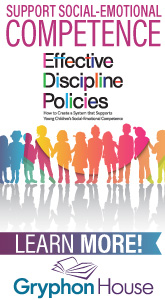ExchangeEveryDay Past Issues
 << Previous Issue
| View Past Issues | | Next Issue >>
<< Previous Issue
| View Past Issues | | Next Issue >> -Peter Drucker
Mark Phillips, in an article on the Edutopia website tells the story of “supervising a teacher who was enrolled in our program…that focused on developing students’ self-knowledge, ego strength, trust and community in classrooms…She called me in a state of frustration.”
He explains that she didn’t feel his program was working, so he went to her school. When he visited her classroom he found “it was in an unfinished basement – cement floors and walls, ceiling-to-floor poles throughout the room…more like an interrogation chamber than classroom. Our ‘humanistic exercises’ were a bad joke in the setting.” He describes how he worked with the teacher, and the students, to find creative ways to totally change the physical environment, including seeking donations of carpet squares, paint, photographs and textured wall hangings. Phillips writes that the transformation of the environment “created trust, community and ego strength, unlike our misplaced exercises.”
And, in the popular book for early childhood professionals, Caring Spaces, Learning Places, author Jim Greenman asks the question, “What kind of society do we want to be?” Greenman asserts that “as places and as institutions, early care and education programs shape future visions of what society is and should be. Children reared in fortresses barricaded against the world outside, or in dingy basements, or in worlds of fluorescently-lit plastic and vinyl will have different aesthetic sensibilities than those raised in light, airy, open places with plants and easy access to the outside.”’
Source: “A Place for Learning: The Physical Environment of a Classroom,” by Mark Phillips, May 20, 2014, edutopia.org
|
Offer valid through April 17, 2021, at 11:59 pm Pacific Time. May not be combined with any other offer. Not valid on past purchases or bulk purchase discounts. |






Post a Comment